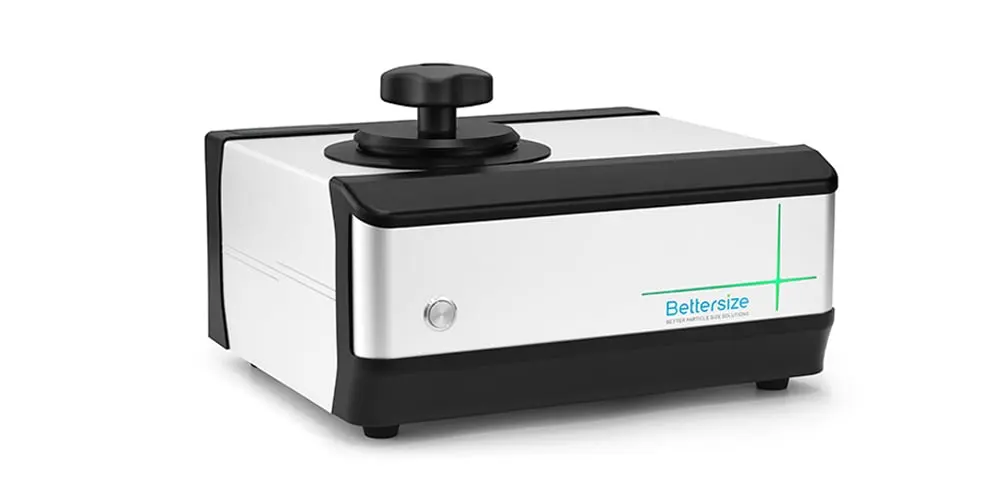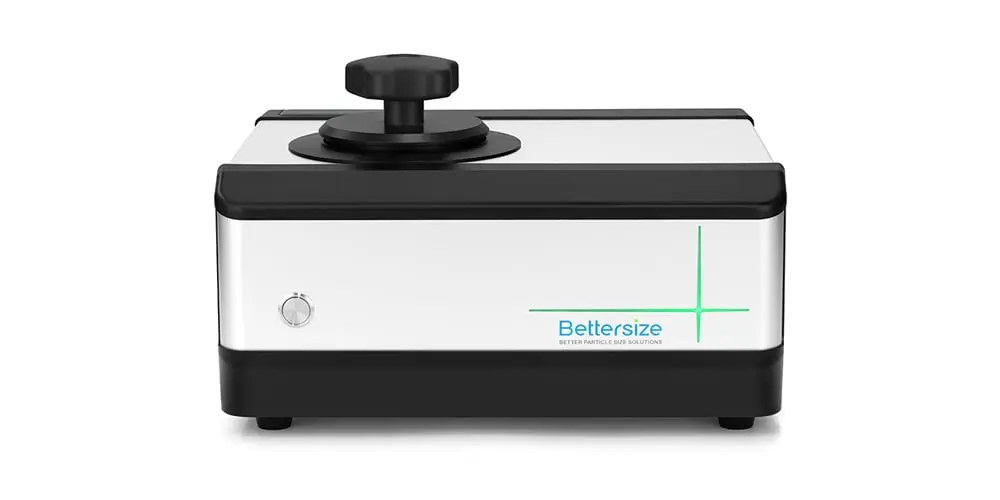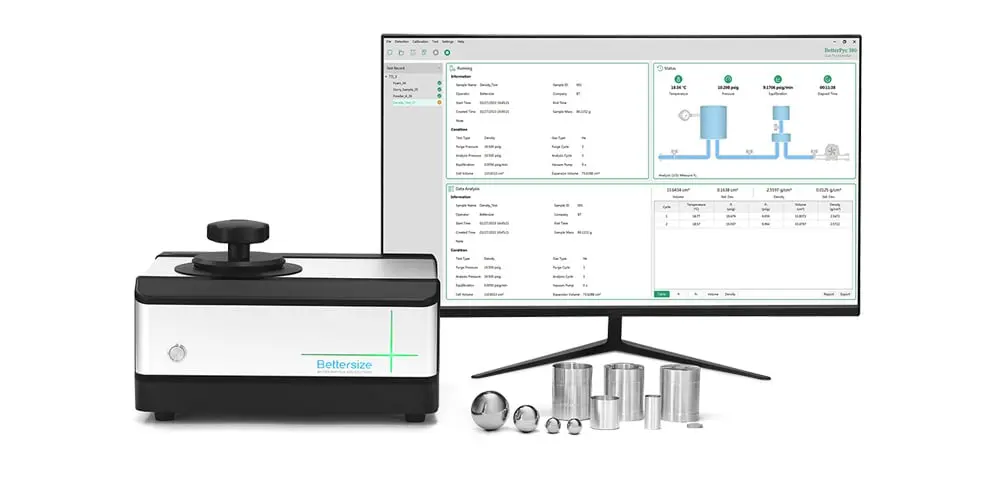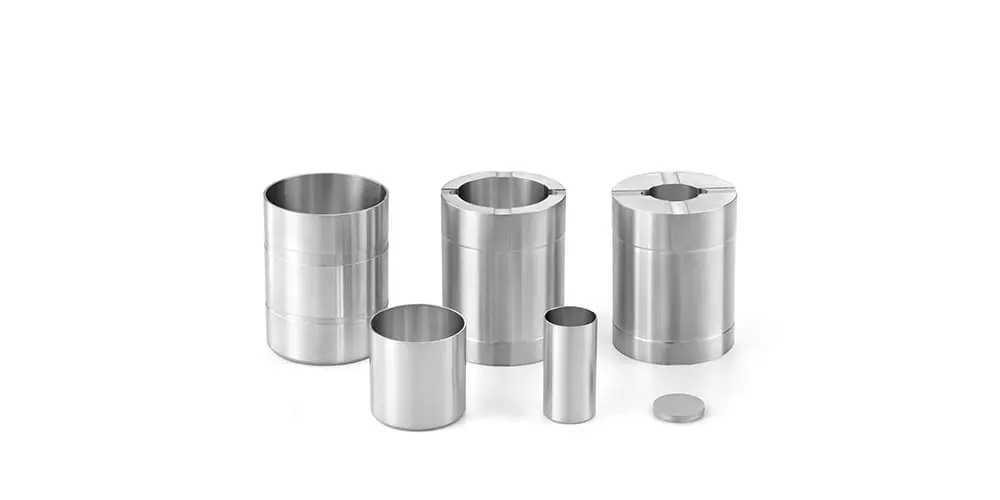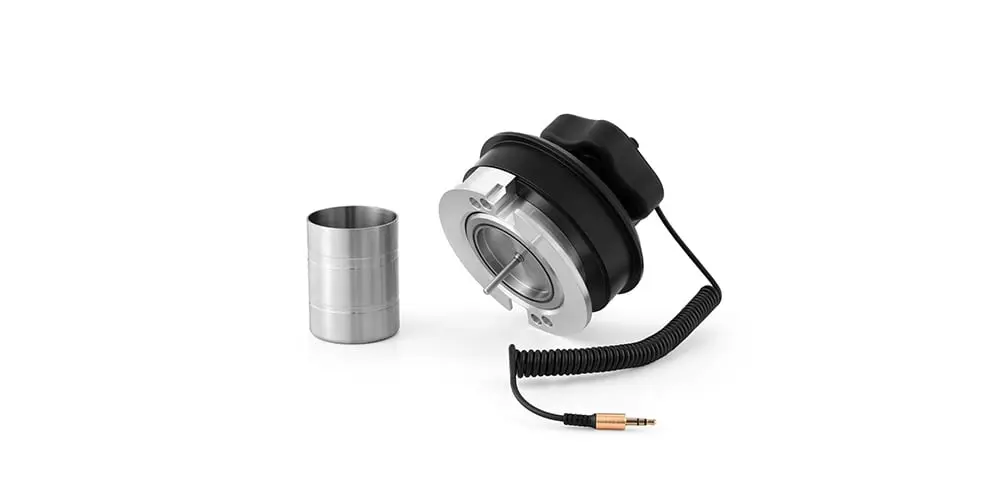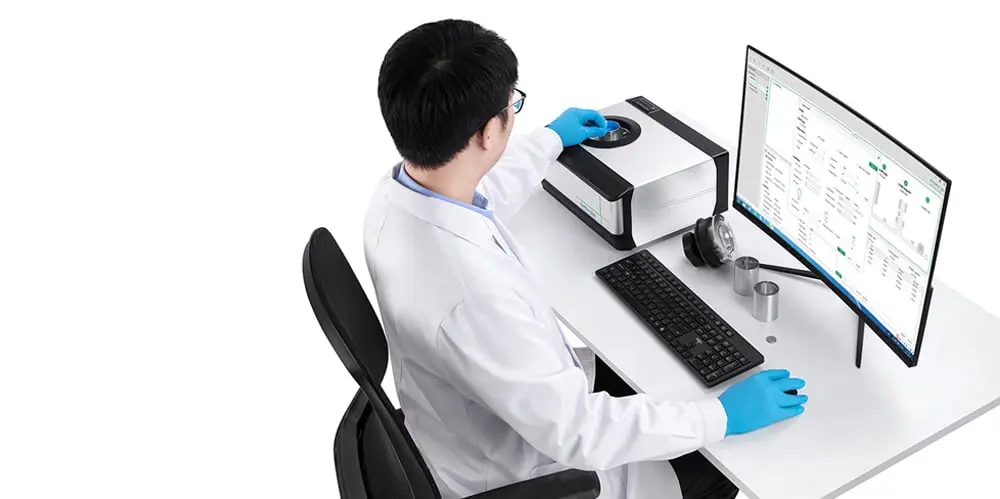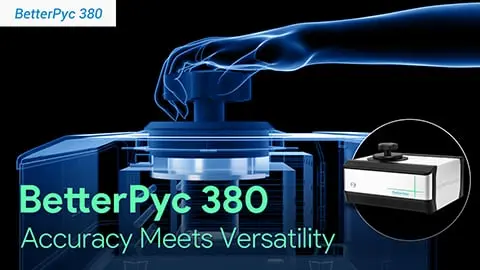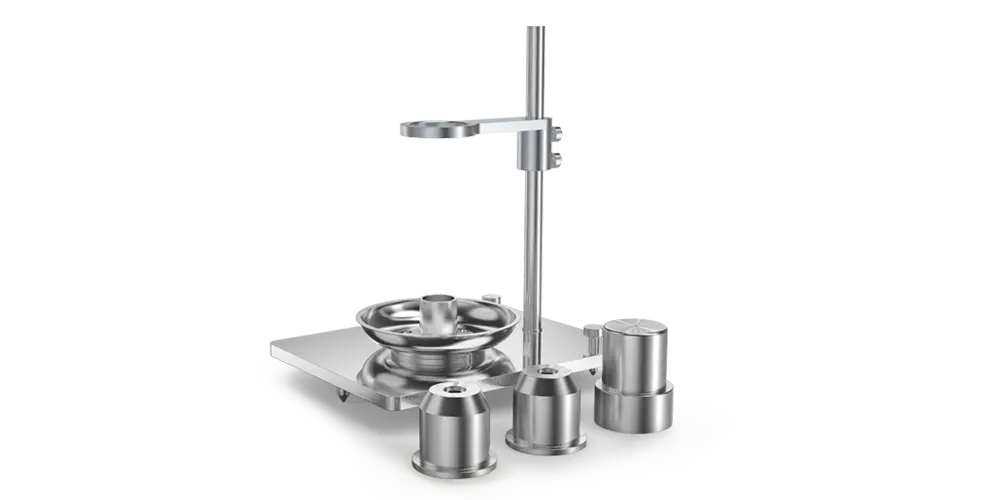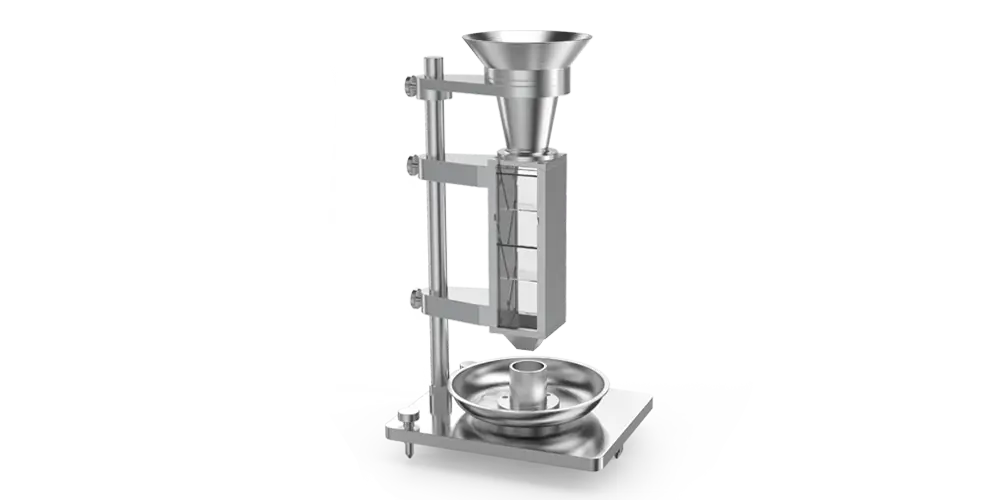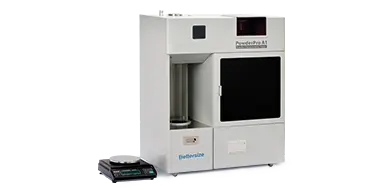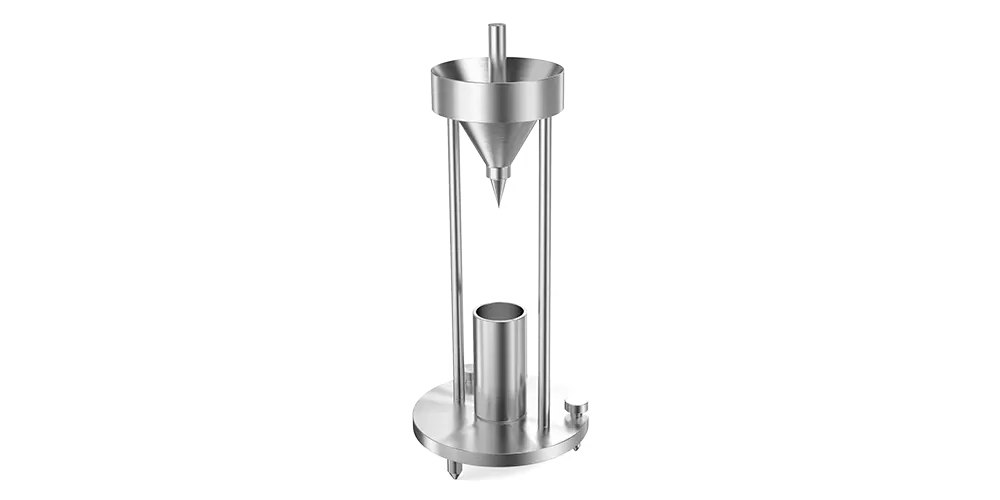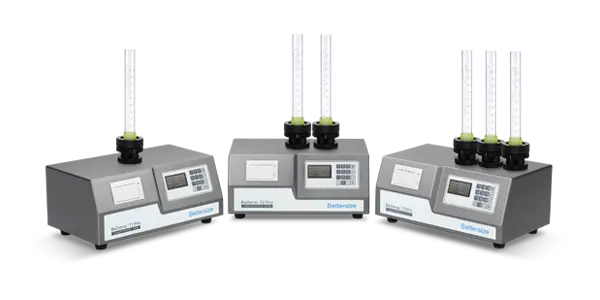BetterPyc 380
The BetterPyc 380 is an automatic gas pycnometer that uses the gas displacement method to deliver highly accurate measurements with ease, offering precision at its best. With temperature control, pressure sensing, and intuitive software, it measures the volume, true density, solid content, and open cell content of your samples with up to 4-digit accuracy. Designed for research and production in a wide range of industries, the BetterPyc 380 will unlock the full potential of your products.
Features and Benefits
- ● Multiple Functions: Volume, Density, Solid Content, Open Cell Content
- ● High-Accuracy
- ● Effortless Operation
- ● Integrated Software Solution
- ● Friendly Sample Requirement
- ● New Software Released: V3.20 Software Update for Better Efficiency
Video
How to Operate BetterPyc 380 to Measure Open Cell Content? 
Overview of BetterPyc 380 | Versatile Gas Pycnometer 
What is True Density? Fundamentals of BetterPyc 380 
What is Gas Displacement Method? How to Calculate the True Density of Materials? 
How to Operate BetterPyc 380 for Volume Calibration? 
How to Operate BetterPyc 380 to Measure the Solid Content? 
How to Operate BetterPyc 380 to Measure the Density? 
Overview
Curated Resources
Related Powder Characteristics Analyzer
-
HFlow 1
Flowmeter Funnel
Measurement: Bulk density and Flow rate
Compliance with USP, Ph. Eur., ASTM, and ISO standards
-
BeDensi B1-S
Scott Volumeter
Measurement: Bulk Density
Compliance with USP, Ph. Eur., ASTM, and ISO standards
-
PowderPro A1
Powder Characteristics Tester
Operation Mode: Automatic
Tapping Speed: 50 - 300 taps/min
Repeatability: ≤3% variation
-
BeDensi B1
Bulk Density Tester
Measurement: Bulk Density
Compliance with GB/T 16913
-
BeDensi T Pro Series
Tapped Density Tester with a Wallet-Friendly Solution
Number of Workstations: 1-3
Tapping Speed: 100 - 300 taps/min
Repeatability: ≤1% variation
-
BeScan Lab
Stability Analyzer
Particle size ranges from 10 nm to 1 mm
Volume fraction up to 95%
Compliance with ISO/TR 18811, 13097, 21357, 22107

